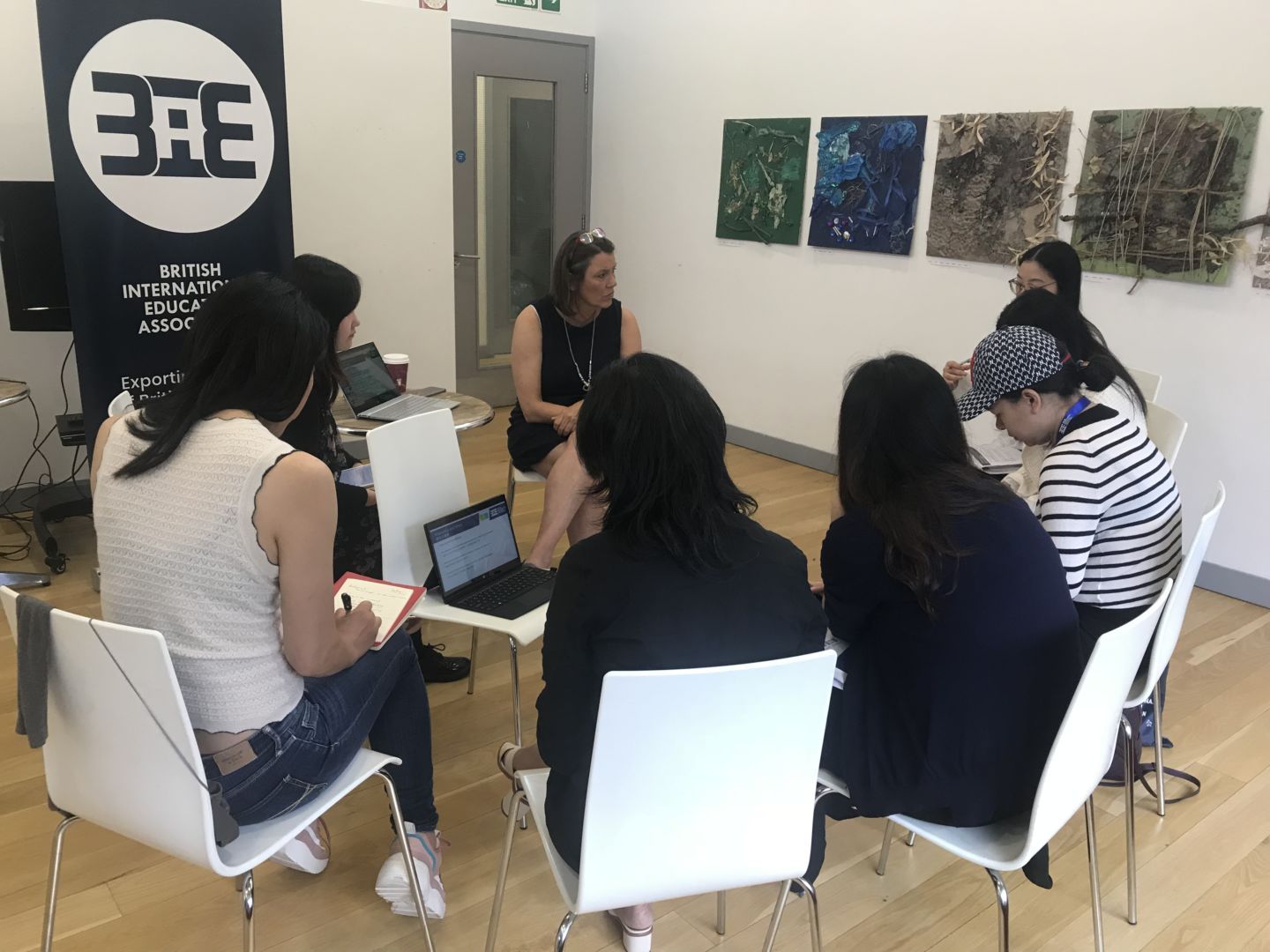On the 12th of August 2019 BIEA’s summer UK study tour finally begun. Eleven teachers from China arrived in London. The participants were greeted by Claire Berridge, a lecturer from Bryanston Nursery, who has gained more than 20 years’ of experience in early years education as well as possessing a Bachelor of Arts degree in IOE Education. Claire Berridge shared the fundamentals and her experiences working within early years education (0-3 years old) and used Bryanston Nursery as an example of how early years education is handled properly in the UK. Ms. Mita Pandy, Archway Nursery Director led the participants to visit the entire nursery. The participants interacted with Claire who enthusiastically and actively discussed with Mita how EYFS supports the development of early years education.
- Core theory – child centred learning
Claire emphasised that the most important thing in early years education is to know that the child is the core focus. Each child should be treated as a separate and special individual. Each week, 4-5 children will be selected as the focus. The teacher will carefully observe them and write detailed observational reports, including details of daily life and even the child’s eating routines. The most important thing about the observational report is to allow the teacher to learn more about the child. This includes the child’s interest, which the teachers would use to build an appropriate teaching schedule full of activities the child can learn the most from. A strict rotary is followed to allow every child to be at the focus of the observation, which provides opportunities for all the children to grow into independent, confident and successful academic students. The participants stated that the core of China’s early years education is also child centred, and that they share common ideas and philosophies within their respective early year’s education fields.
On the other hand, the child centred learning also relies on many positive daily interactions with qualified, caring and attentive early years education teachers. The teacher is not only an observer, but also an examiner. In the process of interacting with the child, the teacher understands and discovers the child’s abilities, interest and emotions. It is difficult to grasp the skills required to deeply understand a child, but it all starts with being an attentive listener and having a keen eye to observe what most would simply neglect. Claire used a good example to demonstrate how one can learn from a child’s behaviour. When a child is playing with a car, the teacher might ask questions about the child’s mathematical ability, such as “how many cars do you have?”. The child might refuse to answer because they know that the teacher can count and is therefore testing them. But when the teacher asks, “could you give me an X number of cars?”, the child may not only fulfil their request, but also share their toys with the teacher. This is a positive interaction that reinforces the student teacher relationship mentioned in EYFS.
- Learning through playing
Claire mentioned that there is no teaching plan in their nursery, because the children are learning during play sessions. She believes that every play session is an exploration of oneself. What the child learns in the process of playing is creativity, critical thinking, problem solving skills, perseverance, and interpersonal skills. These are the learning goals emphasised in EYFS which would help to refine the child into become a good citizen within society when they grow up. Children’s learning is critical, and children aged between 0-3 learn most about the delicate societal norms we face in everyday life when they play with other children. When the child reaches 5-6 years old, they gain the cognitive ability to learn about words and numbers, and thus, the teaching style of the teacher must adapt too. The participants were made aware of the significance of play.
- Key person system
For the care of children aged 0-3 years old, the “key person system” is a very important individual to them. Claire said that in her nursery, each child has a fixed key person for intimate care and family communication. The participants felt very helpful when Claire shared how her nursery implemented the “key person system”. The intimate role of the key person mainly includes changing diapers and napping them, and these intimate behavioural patterns allows the key person to quickly establish an attachment relationship with the child allowing the child to build a sense of security within the nursery. It is also important to establish contact with the family. The key person is the first contact for the parents and is the one within the nursery that understands the child the most. After the parents understand the child’s situation, the child’s care in the nursery is consistent with the parents’ care of the child at home, this includes, living habits, toys and even food. Parents need to complete the EYFS assessment report every three months, whilst the teachers complete the observational report regularly, allowing the nursery to document the child’s progress and highlight areas that need more focus within the child’s care.
- Archway visit
After a short break, the participants visited the Archway Nursery under the leadership of Mita. The participants expressed their great interest. There is an outdoor activity area, which is like a small forest. In addition to the garden, where children can pick vegetables for salads, there is also a small farm in which chickens hatch eggs. The location was deliberately set up as a “risky environment” for the children. It did this through including big rocks, pools and even poisonous plants. The teachers hoped that this real environment can allow children to build a sense of danger to increase their situational awareness skills. This is one of the concepts under the EYFS framework.


